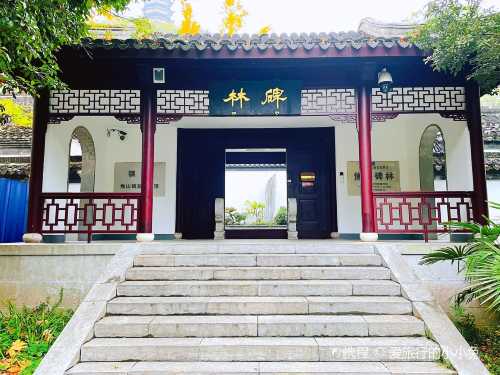Popular Trip Moments
From Dawn to Dusk: Embark on the Ultimate Romantic Journey in Zhenjiang | The ceiling of Zhenjiang travel! 9 hidden landmarks with few people and beautiful scenery | I Thought Suzhou Was Beautiful Until I Visited Zhenjiang | In Nanjing Jiangning! Staying at a High Value-for-Money Hotel | Journey to Zhenjiang: A Two-Day Cultural and Natural Discovery Guide | [4-City Spree in Jiangnan] Explore the Hidden Gems of Water Towns This May Day! | I found a hidden gem in Nanjing! This budget-friendly hotel is pure bliss. | This is the most underrated way to experience Jiangnan - Zhenjiang | A Leisurely Weekend in Zhenjiang: A Journey of Ancient Charm and Relaxation | "The First Tower on the Ancient Canal" - Danyang Wanshan Pagoda | Because a song came to a city ~ Zhenjiang two-day spring trip | Jiangning, Nanjing | I stayed at a hotel I loved! Business trip turned into a vacation~ | This year, I visited the most underrated city, and I'm afraid it will become too popular | Discover Serenity at Jinshan Temple | Appreciation of the National Treasures of Jiaoshan Forest of Steles | Qingming Holiday - 3-Day Travel Guide | Finally, my favorite travel destination has appeared! | A Fairytale Amusement Park Worth Visiting Again and Again from Nanjing | Discover the beautiful city of Zhenjiang, China | Listen to the wind by the water, and steal a half-day of leisure. | Trip to Zhenjiang 🌸 | This Zhenjiang hotel is very close to the high-speed rail station and has a fantastic environment. | Jurong Jinlong, Your Dream Palace | Yangzhou-Zhenjiang-Nanjing City Walk: Unlock the Charm of Three Cities | Here comes the guide to getting stamps at Maoshan | Zhenjiang Travel Diary🫧 | Xijindu, the historical ferry crossing in Zhenjiang | Zhenjiang | March-April is the perfect time to visit, fewer crowds and beautiful scenery! | A song can lead you to a city~The Zen rhythm of Jinshan Temple and a thousand-year-old myth. | OMG, you guys, the family trip to Zhenjiang Dagang was amazing!
Recommended Attractions at Popular Destinations
Bangkok attraction near me | Manila attraction near me | Tokyo attraction near me | Taipei attraction near me | Hong Kong attraction near me | Seoul attraction near me | Kuala Lumpur attraction near me | Los Angeles attraction near me | Shanghai attraction near me | New York attraction near me | Shenzhen attraction near me | Osaka attraction near me | Singapore attraction near me | London attraction near me | Guangzhou attraction near me | San Francisco attraction near me | Beijing attraction near me | Macau attraction near me | Bali attraction near me | Jakarta attraction near me | Paris attraction near me | Ho Chi Minh City attraction near me | Istanbul attraction near me | Phuket attraction near me | Chicago attraction near me | Seattle attraction near me | Toronto attraction near me | Orlando attraction near me | Cebu attraction near me | Chiang Mai attraction near me
Popular Attractions
SEA LIFE Bangkok Ocean World | Matsumoto-jō Castle | Catacombs of Saint Gaudiosus | Big Wild Goose Pagoda | Erotika swingers club | Emperor Qinshihuang's Mausoleum Site Museum | Xiling Snow Mountain | Qibao Old Street | St. Antony's Roman Catholic Church, Vaduthala | Xi'an City Wall | Mount Siguniang | Waiotapu Thermal Wonderland | TAIPEI 101 | Shanghai Natural History Museum | Orana Wildlife Park | Auckland Sky Tower Skywalk | Fisher Resort Shobara | Daci'en Temple | Sanya Atlantis Resort | Luhuitou Square | Mesjid Nurul Barokah, Rancapeundeuy | Volksparkstadion - Eingang Zone 8 | Plazoleta "El Mono" | Masjid Al Muttaqin | Tourist Information Centre Pilsen | Shahi Mosque | Hong Hay Villa BLK 12 | View point | Jai Maa Shitla Mandir | Shelter 5 Hummel Park
Popular Restaurants in Zhenjiang
MISS CHOW'S TIME | XIANG YUE | WEIYA DAJIUDIAN | Xinxianghui (changfaguangchang) | Laotu'echang Hot Pot (jiefanglu) | Pizza Hut (wanda) | Qingshuiriben Cuisine Teppanyaki (xuefulu) | FlashFire kuaihuo Cuisine (diyiloujie) | YI TANG YI BAO | 必胜客(镇江苏宁广场店) | Yong'anyuzhuang (dongwulu) | SHAO SHUN XING GUO GAI MIAN BA BAI BAN DIAN | 必胜客(八佰伴店) | 七欣天品蟹轩(镇江中山路店) | 相遇融合餐厅(西津渡店) | Jin Chicken Restaurant | DQ (wanda) | HUO TOU SHAO | 海底捞火锅(京口八佰伴店) | 镇江康华汇利喜来登酒店·采悦轩中餐厅(北府路店) | NEW BERE | 吴家馄饨 | 夕酱烧肉丼 | 相遇融合餐厅(大港店) | 7分甜(句容吾悦店) | 允野杂咖(润泽公寓店) | TONG QING LOU WU YUE DIAN | 相遇融合餐厅(万达广场店) | 九鼎轩脆毛肚火锅(北固湾店) | Xinshiqi Barbecue (jiangsudanyangwuyueguangchang)
Popular Ranked Lists
Top 7 Local Restaurants in Qingzhou | Popular Premium Hotels in Sucre | Popular Best Things to Do in Wudalianchi | Top 5 Best Things to Do in Tongliao | Top 10 Local Restaurants in Nanchang County | Top 7 Local Restaurants in Yuxi | Top 5 Best Things to Do in Danzhou | Top 10 Local Restaurants in Golmud | Top 10 Local Restaurants in Dongtai | Popular Premium Hotels in Lourdes | Popular Best Things to Do in Shangqiu | Popular Best Things to Do in Pingxiang | Popular Premium Hotels in Kirov Oblast | Popular Premium Hotels in Lake Louise | Top 10 Local Restaurants in Genting Highlands | Popular Luxury Hotels in Fes-Meknes | Top 9 Local Restaurants in Wuzhou | Top 10 Local Restaurants in Guanghan | Popular Premium Hotels in Agrinion | Top 5 Best Things to Do in Yongzhou | Top 7 Local Restaurants in Shennongjia | Top 10 Local Restaurants in Kaohsiung | Top 4 Local Restaurants in Feixi | Top 9 Best Things to Do in Liangshan Prefecture | Popular Best Things to Do in Haining | Popular Luxury Hotels in Kandanakolli | Popular Premium Hotels in Juan-les-Pins | Top 10 Local Restaurants in Dengfeng | Top 3 Best Things to Do in Dazhou | Popular Best Things to Do in Jixi
Payment Methods
Our Partners
Copyright © 2025 Trip.com Travel Singapore Pte. Ltd. All rights reserved
Site Operator: Trip.com Travel Singapore Pte. Ltd.
Site Operator: Trip.com Travel Singapore Pte. Ltd.












